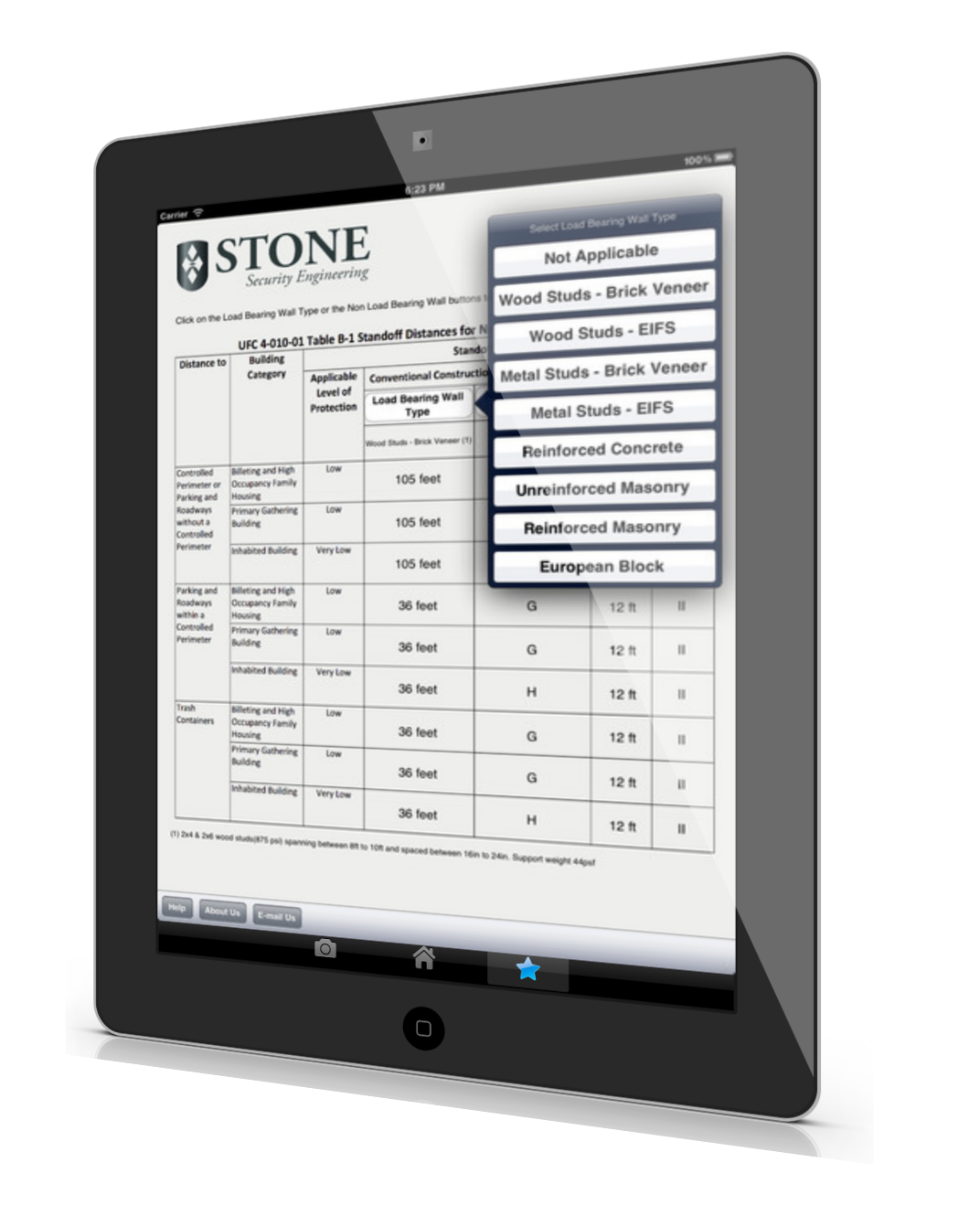iStandoff for iPad & iStandoff Lite for iPhone
This Application is a tool to quickly and easily identify Conventional Construction standoff distances, per the UFC 4-010-01 DoD Minimum Antiterrorism Standards for Buildings, February 9, 2012, including Change 1 October 1, 2013.
Get iStandoff for iPad
Get iStandoff Lite for iPhone
Background
The US Department of Defense has released an updated version of their Unified Facilities Criteria UFC 4-010-01 DoD Minimum Antiterrorism Standards for Buildings. The newest version includes Change 1 October 1, 2013.
Overall, the document provides baseline requirements for the design of buildings occupied by DoD personnel. The intent of the standards is to “minimize mass casualties in buildings or portions of buildings owned, leased, privatized, or otherwise occupied, managed, or controlled by or for DoD in the event of a terrorist attack.”
One of the techniques to achieve this goal is through the use of Standoff which is “a distance maintained between a building or portion thereof and the potential location for an explosive detonation.”
From a criteria perspective, the document has two types of standoff distances:
• “Minimum standoff distance. The smallest permissible standoff distance for new construction regardless of any analysis results or hardening of the building. For existing buildings, standoff should never be less than this distance, but may with appropriate hardening or analysis where this distance is unachievable.”
• “Conventional construction standoff distance. The standoff distances at which conventional construction may be used for building components other than doors and windows without a specific analysis of blast effects, except as otherwise required in these standards.” The Conventional Construction standoff distances are based on the specific material and construction type of a building. Change 1, October 1, 2013 modifies the standoff distances from those included in the previous version of the document.
In order to determine the project specific Conventional Construction two tables (Table B-1 and Table B-2) need to be cross-consulted. (The table shown in the application is a reproduction of Table B-1: Standoff Distances for New and Existing Buildings from the UFC document).
How to Use
This Application automates the process of determining Conventional Construction standoff distances and provides the applicable distances with two taps of the screen.
First select either “Load Bearing Wall” or “Non Load Bearing Wall”. Next, select the appropriate wall material from the pop-up list. The table will update itself to show the Conventional Construction standoff distances for the selected wall material. Note that if you do not have either Load Bearing Walls or Non Load Bearing Walls, you can select “None” from the pop-up list.
There are table footnotes for each of the different wall types that contain important information regarding the applicability of the standoff distances.
Wall types not included in the table must be designed to provide the appropriate response. Stone Security Engineering provides design services that will assist design teams in determining the requirements for other wall types.
Call or Email us at (646) 649-3169 or Info@StoneSecurityEngineering.com


